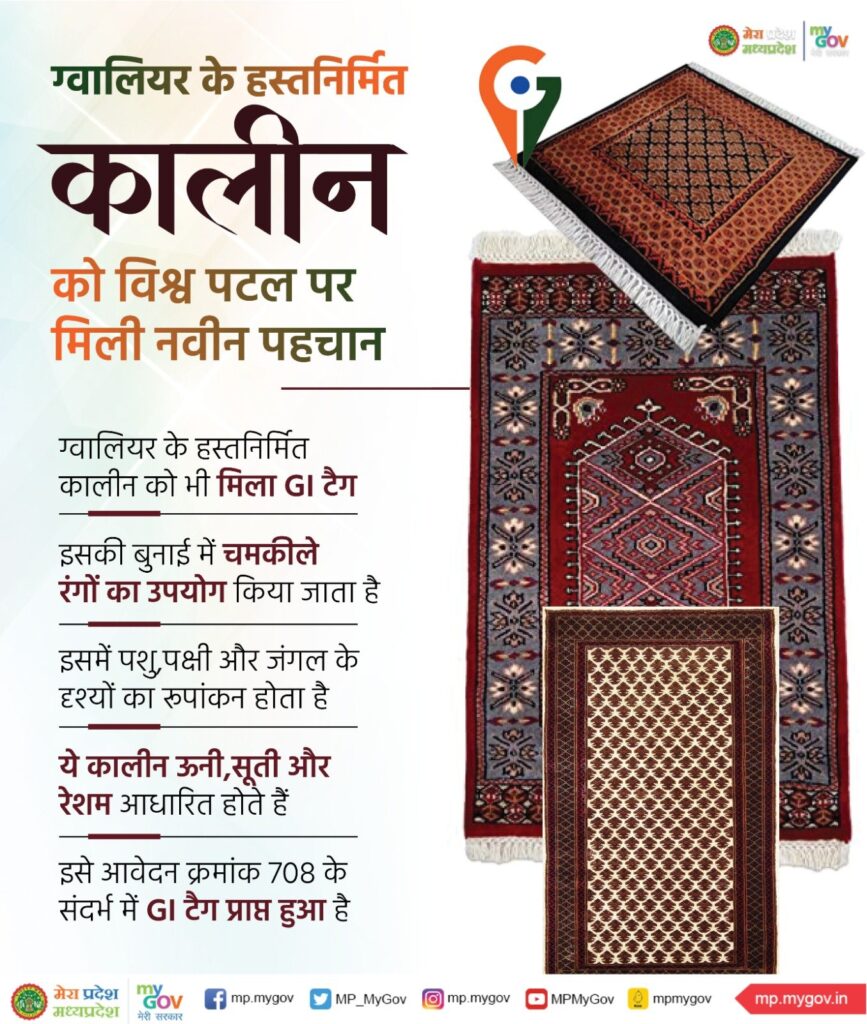Search
CTRL+K
Search
CTRL+K
Gwalior’s handmade Kalin has been awarded the GI tag in the handicraft category on application number 708. Interestingly, Muraina’s Gazak also received the GI tag recently. Therefore, two items in the Chambal region, near Gwalior, have been awarded the GI tag. In this regard, we would like to tell you how the work of handmade Kalin started in Gwalior and why this Kalin is special. The Mughal Empire ruled Gwalior from 1528 to 1731. After that, the Marathas took over Gwalior. When the Mughals came to Gwalior, they brought their culture with them. During this time, the Kalin and the artisans who made it also came to Gwalior with the Mughals. After this, the work of handmade Kalin started in Gwalior. Although later the Marathas ruled Gwalior, the work of making Kalin continued here.
These carpets are a testament to the master craftsmanship of the artisans who have been creating them for generations. The specialty of Gwalior’s handmade carpets lies in their unique designs and patterns, which are influenced by Persian carpet designs.

The interplay of symmetry and permutation of geometry is the hallmark of Persian carpet designs. This concept is also evident in the designs of Gwalior carpets. The basic framework of the design is the same as its Persian ancestors, with a rectangular carpet having two thick borders flanking a central medallion. The medallion expands symmetrically into a ‘field’ and leaves a spandrel or triangular quarter panel at the corners, touching the inner border. Each gap of this framework is elaborately decorated with motifs of flowers, leaves, and other patterns inspired by nature.
There are two distinct categories of designs in Gwalior carpets – curvilinear and rectilinear. According to some craftsmen, Gwalior carpets are famous for their beautiful floral patterns. The edges or short sides of the carpet have tufts of threads. The designs, patterns, and their symmetrical variations occur in two main parts of the carpet – the center and the borders, which frame the area.
What makes Gwalior carpets stand out is the craftsmen’s ability to incorporate traditional themes into contemporary designs without diluting their bonds with the vast repository of ancestral patterns. The designs are influenced by the rich cultural heritage of the region and are a celebration of the city’s artistic legacy.
The process of creating a Gwalior carpet is a labor-intensive one. The artisans use a combination of techniques such as knotting, dyeing, and weaving to create these masterpieces. The quality of the raw materials used also plays a crucial role in determining the final product’s durability and longevity.
Gwalior carpets are highly sought after by collectors and connoisseurs of handmade carpets worldwide. They are a testament to the city’s rich artistic legacy and the master craftsmanship of its artisans. If you are ever in Gwalior, do not miss the opportunity to witness the creation of these exquisite carpets or take one home as a prized possession.
© Gwalior Plus. All rights reserved.